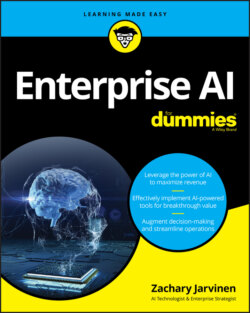Читать книгу Enterprise AI For Dummies - Zachary Jarvinen - Страница 24
Algorithms
ОглавлениеIn the 1990s and beyond, work in AI expanded to include concepts from probability and decision theory and applied them to a broad range of disciplines.
Bayesian networks: A probabilistic graphical model that represents a set of variables and their conditional dependencies via a directed acyclic graph
Hidden Markov models: Statistical models used to capture hidden information from observable sequential symbols
Information theory: A mathematical study of the coding, storage, and communication of information in the form of sequences of symbols, impulses, and so on
Stochastic modeling: Estimates probability distributions of potential outcomes by allowing for random variation in one or more inputs over time
Classical optimization: Analytical methods that use differential calculus to identify an optimum solution
Neural networks: Systems that learn to perform tasks by considering examples without being programmed with task-specific rules
Evolutionary algorithms: Population-based optimization algorithms inspired by biological evolution, such as reproduction, mutation, recombination, and selection
Machine learning: Algorithms that analyze data to create models that make predictions, take decisions or identify context with significant accuracy, and improve as more targeted data is available
As the sophistication of the algorithms directed to the challenges of AI increased, so did the power of the solutions.
